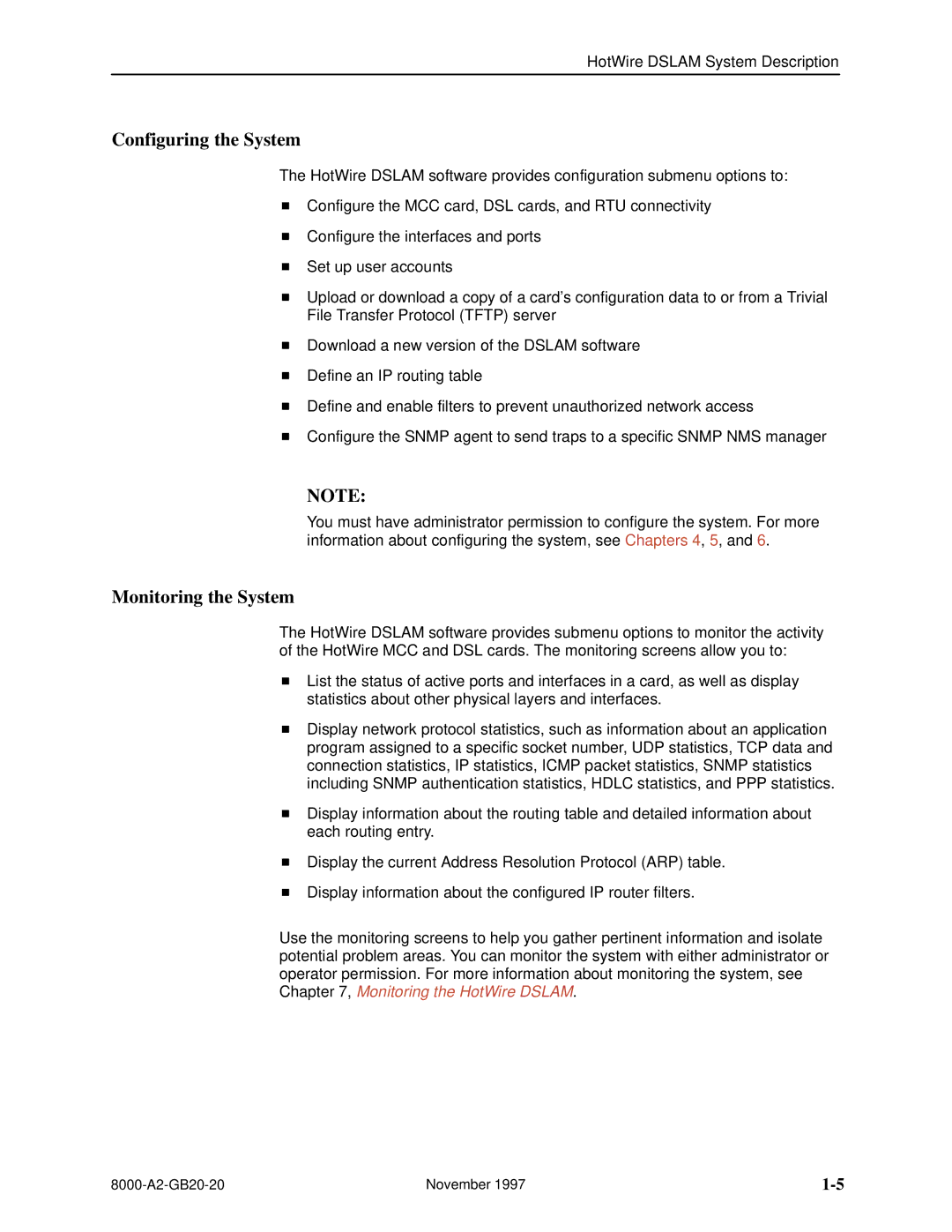HotWire DSLAM System Description
Configuring the System
The HotWire DSLAM software provides configuration submenu options to:
HConfigure the MCC card, DSL cards, and RTU connectivity
HConfigure the interfaces and ports
HSet up user accounts
HUpload or download a copy of a card's configuration data to or from a Trivial File Transfer Protocol (TFTP) server
HDownload a new version of the DSLAM software
HDefine an IP routing table
HDefine and enable filters to prevent unauthorized network access
HConfigure the SNMP agent to send traps to a specific SNMP NMS manager
NOTE:
You must have administrator permission to configure the system. For more information about configuring the system, see Chapters 4, 5, and 6.
Monitoring the System
The HotWire DSLAM software provides submenu options to monitor the activity of the HotWire MCC and DSL cards. The monitoring screens allow you to:
HList the status of active ports and interfaces in a card, as well as display statistics about other physical layers and interfaces.
HDisplay network protocol statistics, such as information about an application program assigned to a specific socket number, UDP statistics, TCP data and connection statistics, IP statistics, ICMP packet statistics, SNMP statistics including SNMP authentication statistics, HDLC statistics, and PPP statistics.
HDisplay information about the routing table and detailed information about each routing entry.
HDisplay the current Address Resolution Protocol (ARP) table.
HDisplay information about the configured IP router filters.
Use the monitoring screens to help you gather pertinent information and isolate potential problem areas. You can monitor the system with either administrator or operator permission. For more information about monitoring the system, see Chapter 7, Monitoring the HotWire DSLAM.
November 1997 |
